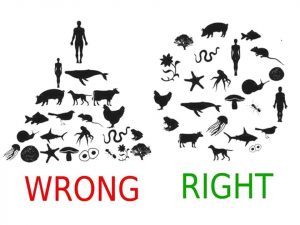Shallow And Deep Ecologism:

As India continues to grapple with the unrelenting heat waves, it becomes relevant to unpack two strands of environmental philosophy that reinvent the relationship between nature and humans — Shallow and Deep Ecologism.
- The concepts emerged in the 1970s, when Norwegian philosopher Arne Næss sought to look beyond the popular pollution and conservation movements of his milieu to address environmental degradation.
- In his study of ecological concerns, Næss is more preoccupied with the role of the individual in nature. He believes that owing to increased anthropocentrism, humans have cut themselves off from nature, viewing nature and themselves as competing entities and establishing a master-slave dynamic.
- By placing humans at the heart of the environmental crisis, Næss outlines the difference between the two styles of ecologism.
Shallow Ecologism:
- Shallow ecology refers to the philosophical or political position that environmental preservation should only be practiced to the extent that it meets human interests.
- It is more like a powerful and fashionable fight against pollution and resource depletion rather than a radical change.
- Exponents of this philosophy believe in continuing our present lifestyle, but with specific tweaks aimed at minimising the damage to the environment.
- Also referred to as weak ecologism, it may include the use of vehicles that cause less pollution or air conditioners that do not release chlorofluorocarbons (CFCs).
- This branch of ecologism primarily serves to maintain the lifestyle of those dwelling in developed countries.
Deep Ecologism:
- Deep ecologism believes that humans should radically change their relationship with nature.
- Its proponents reject shallow ecologism for prioritizing humans above other forms of life, and subsequently preserving the environmentally destructive way of life in modern societies.
- It maintains that by sustaining this lifestyle, shallow ecologism further widens the inequalities between countries.
- For instance, despite constituting only 5% of the world’s population, the U.S. accounts for 17% of the world’s energy consumption and is the second largest consumer of electricity after China.
- Similarly, while low and middle-income countries have recorded lower cumulative and per capita carbon dioxide emissions over the past two centuries, it is the wealthier countries which are most responsible for a majority of carbon emissions.




